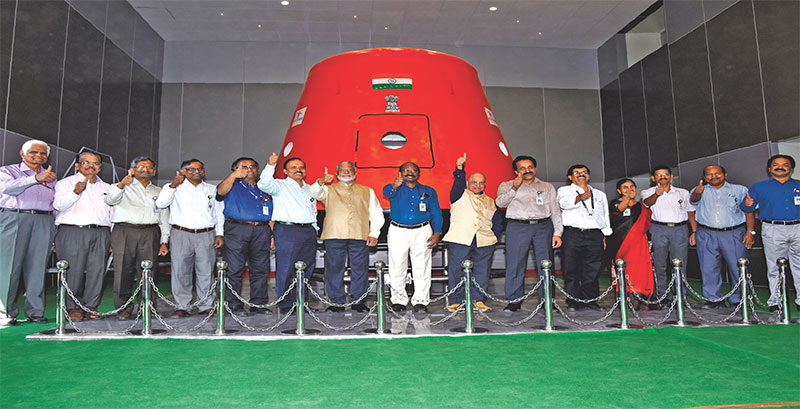India’s first manned space mission is scheduled for December 2021
Yunus Dar
In 2019 India took a monumental leap in the area of space exploration. India’s premier space agency, Indian Space Research Organisation (ISRO) announced it was sending astronauts into space, as early as 2022. The ISRO chief K. Sivan announced the establishment of India’s first Human Space Flight Centre (HSFC) to train astronauts and set up the necessary infrastructure for India’s first manned space mission - the Gaganyaan.

He said the Gaganyaan programme approval will be a major milestone for ISRO, and a brilliant start to 2019. The programme will usher in a major expansion of ISRO, as the exercise will involve selecting the crew, training them for spaceflight, ensuring safe return to earth and creating life support systems for a successful mission. The ISRO chief also confirmed the date of India’s second mission to the moon, Chandrayaan-2, which will be before April-end.
Dr K. Kasturirangan, former chairman, ISRO inaugurated HSFC on 30 January 2019 at ISRO headquarter campus in Bengaluru. A full-scale model of Gaganyaan’s crew module was also unveiled at the event.
- Sivan declared HSFC as top priority for ISRO, and said the management structure has been put in place to realise the objective. HSFC shall be responsible for implementation of Gaganyaan project which involves end-to-end mission planning, development of engineering systems for crew survival in space, crew selection and training and also pursue activities for sustained human space flight missions. HSFC will take support of the existing ISRO centres to implement the first development flight of Gaganyaan under Human Space Flight Programme. S. Unnikrishnan Nair is the founder director of HSFC and R. Hutton is the project director of Gaganyaan project.
According to ISRO, the mission will be a major turning point for the organisation, which will be expanding its activities beyond engineering activities of launchers and satellites, and into the realm of developing and handling technologies to sustain humans in space.
“The HSFC will work full steam now. We must select the astronauts, train them, create and ensure livable conditions in space for them and later bring them back safely and rehabilitate them in their routine,” said Sivan.
The Gaganyaan module will be carried by India’s heaviest launch vehicle – GSLV Mark III – which became operational in November after its second successive flight in a row. It will have two non-crew flights in December 2020 and July 2021 for it to qualify for carrying astronauts into space.
GSLV-Mk III has twice the capability of its predecessor, GSLV-Mk II, and is designed to carry four-tonne satellites into geosynchronous transfer orbit or 10-tonne satellites into low earth orbit. Being 43 metres tall, GSLV-Mk III is a three-stage launch vehicle with two solid strap-ons, with a liquid core stage and a cryogenic upper stage. ISRO has to spend over Rs 300 crores on each launch of GSLV-Mk III.
You must be logged in to view this content.

